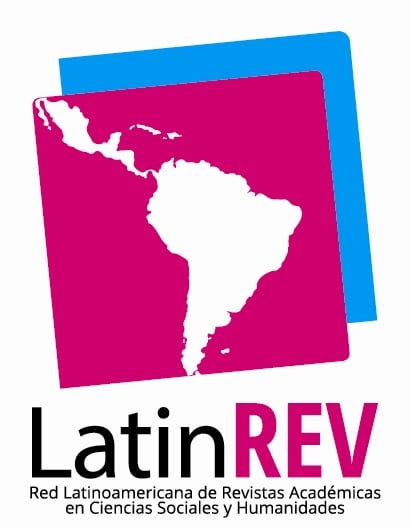Guía para autores
Política editorial
Se aceptan manuscritos originales e inéditos de tipo científico y tecnológico, que deberán estar escritos con un lenguaje claro y accesible para lectores con formación profesional o de interés científico, y con una estructura lógica. TECNOCIENCIA CHIHUAHUA publica artículos de investigación, notas científicas y artículos de revisión actualizados. Todo manuscrito recibido es revisado en primera instancia por el Equipo Editorial para verificar que cumpla con el formato y contenido establecido por las normas editoriales de TECNOCIENCIA CHIHUAHUA. El Equipo Editorial verificará que el envío cumpla con todos los requisitos de postulación, incluyendo su revisión bajo el software antiplagio iThenticate, donde el porcentaje de similitud con otros trabajos ya publicados (ajenos o propios) deberá ser menor al 10 %. Los artículos se enviarán a revisión con un Editor Asociado y, una vez revisado y teniendo en cuenta las sugerencias y cambios realizados al manuscrito, los editores asociados determinarán su viabilidad para su publicación, notificándose la aceptación o el rechazo al autor y asignando a un Editor de Sección especialista en el tema proveniente de nuestro Comité Científico. Si después del proceso de arbitraje, el manuscrito es aceptado, la revista lo enviará al proceso de edición y el responsable se contactará con el autor de correspondencia para la revisión y aprobación de las pruebas de galera. También se le solicitará un resumen gráfico que describa visualmente el contenido del artículo, así como cuatro o cinco aspectos relevantes del trabajo a publicar.
Para evaluar los manuscritos, se aplican los siguientes criterios: rigor científico, calidad y precisión de la información, relevancia del tema y claridad del lenguaje. Los árbitros serán quienes determinarán la calidad científica del manuscrito y su aprobación para su publicación. Los artículos de investigación deben presentar un análisis detallado de los resultados originales, así como un desarrollo metodológico riguroso que resalte los logros científicos. Las notas científicas o comunicaciones cortas deberán mostrar resultados novedosos, modificaciones de técnicas o desarrollo de técnicas emergentes innovadoras. Asimismo, los artículos de revisión deberán abordar temáticas novedosas y fundamentar el estado del arte en una revisión de la literatura actualizada sobre temas actuales y de interés para el lector.
La revista TECNOCIENCIA CHIHUAHUA es acceso abierto diamante por lo que proporciona un acceso abierto e inmediato a su contenido. Su objetivo es ofrecer al público un acceso libre a información científica original e inédita, así como a revisiones críticas actualizadas, para favorecer una mayor difusión global del conocimiento y cumplir así con la normativa de acceso abierto de DOAJ.
Arbitraje
El proceso de evaluación de manuscritos es el siguiente: Un Editor de Sección del Comité Científico evaluará cada contribución, y podría rechazar trabajos en esta etapa por razones tales como: carecer de originalidad, tener serias deficiencias científicas, un uso inadecuado del lenguaje y de la gramática en general, o que el contenido esté fuera de los alcances de la revista. Los autores deberán proporcionar los datos de contacto completos de cuando menos tres árbitros potenciales adscritos a una institución distinta a la del autor, sin embargo, la asignación de los árbitros para revisión del manuscrito será una decisión de la revista. La revista opera bajo un sistema de doble ciego y favorecerá la participación de revisores externos a la institución y al país de los autores. Tras el proceso de arbitraje, el Editor de Sección emitirá un dictamen respecto a la evaluación del trabajo a los autores el cual puede ser: aceptar este envío o no publicable.
En caso de controversia, el Editor de Sección podrá solicitar una evaluación adicional o dictaminar el manuscrito.
Derechos de autor
Una vez aceptado el manuscrito, se solicitará al Autor enviar el formato de cesión de derechos de autor para la difusión del artículo a TECNOCIENCIA CHIHUAHUA. Los autores concederán por escrito a la revista TECNOCIENCIA CHIHUAHUA, la propiedad de los derechos de autor, únicamente para su difusión, los autores retienen su propiedad intelectual, lo que permite que su artículo y materiales puedan ser reproducidos, publicados, editados, fijados, comunicados y transmitidos públicamente en cualquier forma o medio, así como su distribución en el número de ejemplares que se requieran y su comunicación pública, en cada una de sus modalidades, incluida su puesta a disposición del público a través de medios electrónicos, ópticos o de cualquier otra tecnología, con fines exclusivamente científicos, culturales, de difusión y sin fines de lucro.
Los artículos publicados en TECNOCIENCIA CHIHUAHUA, se distribuirán amparados bajo la Licencia Creative Commons Atribución-NoComercial 4.0 Internacional
Costo y tiempo de publicación
La Revista TECNOCIENCIA CHIHUAHUA es gratuita y está financiada por la Universidad Autónoma de Chihuahua (UACH). Se solicita a los autores se inscriban a la Revista para estadísticas de acceso y autoría.
El tiempo para la recepción y envío a revisión será en un máximo de tres días. El tiempo promedio para la primera respuesta de los árbitros es de cuatro semanas. El tiempo estimado para la aceptación del artículo es de tres meses y su publicación dependerá de la cantidad de trabajos que estén en espera de publicación.
Contribuciones
- Tipos de contribuciones
Las contribuciones se clasifican en artículos de investigación, notas científicas, así como artículos de revisión en español e inglés.
No se aceptan contribuciones que se limiten a reportar información general sin fundamento estadístico, encuestas, composición química, u optimización de formulaciones (superficie de respuesta). Debe haber una aportación científica, tecnológica o ingenieril original, inédita y que no esté siendo considerada para su publicación simultánea en otro medio. Una descripción de los envíos se encontrará en el siguiente apartado.
- Áreas de las contribuciones
Las áreas que abarca la Revista TECNOCIENCIA CHIHUAHUA son las siguientes: Alimentos, Biológica, Salud, Agropecuaria, Cultura Física, Ingeniería y Tecnología, Química y Recursos Naturales. Al someter su contribución se deberá indicar la categoría que le corresponde. De no ser esto posible, es responsabilidad del autor proporcionar el área sugerida de su contribución.
- Idioma de las contribuciones
El idioma de las contribuciones será inglés o español. Se recomienda que los autores lleven a cabo una cuidadosa revisión del correcto uso del lenguaje para que los revisores puedan evaluar los méritos científicos del trabajo. Los editores podrán rechazar cualquier contribución que no cumpla los estándares.
- Preparación y envío de las contribuciones
Es indispensable que el autor se registre para postular el manuscrito a la revista. Se recomienda que el autor complete en su totalidad todos los datos solicitados en su perfil incluyendo su identificador ORCID.
¿No está registrado? Regístrese aquí
¿Ya está registrado? Ingrese aquí
Los autores, deberán seguir las directrices del sitio web de la revista para el envío de las contribuciones.
Lineamientos generales para envío de manuscritos
Guía práctica para subir un envío a la plataforma
Las contribuciones deben ir acompañadas de una carta al editor (Carta de presentación del artículo) en donde explícitamente se describirá la relevancia del trabajo, manifestando que el trabajo no ha sido publicado o está siendo considerado para publicación en otra parte. Así mismo, se hará de manifiesto que la publicación ha sido aprobada por todos los autores y que el manuscrito una vez aceptado no será publicado de la misma forma en otra revista, en inglés, español, o cualquier otra lengua, ni electrónicamente, sin el consentimiento de la revista. Las secciones que integrarán a cada una de las contribuciones se muestran a continuación:
1) Artículos científicos
Se constituirán de los resultados parciales o finales de investigaciones originales fundamentadas en metodologías científicas. Los artículos de investigaciones deben presentar: un análisis detallado de los resultados, así como un desarrollo metodológico original, resaltando los aportes científicos logrados. Estos artículos se conforman de las siguientes secciones:
a) Título del artículo
- b) Resumen/Abstract
- c) Introducción
- d) Materiales y métodos
Materiales
Métodos
Métodos fisicoquímicos
Métodos biológicos
Métodos estadísticos
- e) Resultados y discusión
- f) Conclusiones
- g) Agradecimientos
- h) Conflicto de interés
- i) Referencias
En la descripción de la sección de Materiales y métodos y Resultados y discusión, puede redactarse y presentarse en una sola sección o estructurarse con subtítulos para una mejor descripción. Deberá tener una extensión de 18 cuartillas como máximo, incluyendo Resumen y Referencias
2) Notas científicas
Es una comunicación corta, sobre resultados novedosos, modificaciones de técnicas o desarrollo de técnicas emergentes innovadoras, informes novedosos de investigaciones en el área de agropecuaria, salud, deportes o ingeniería. Para la presentación de este documento, se incluirán las secciones.
a) Título del artículo
- b) Resumen/Abstract
- c) Texto
- d) Conclusiones
- e) Agradecimientos
- f) Conflicto de interés
- g) Referencias
El texto de las notas científicas, se presentará en forma corrida, pero en forma clara y con coherencia, que permita su fácil comprensión. Deberá tener una extensión máxima de 9 cuartillas, incluyendo Resumen y Referencias
3) Artículos de revisión
Se conformarán, de revisiones críticas actualizadas de un tópico en especial novedoso de las áreas temáticas de la revista. El objetivo de estos artículos, es presentar al lector una perspectiva de un tema en específico, a través de su análisis de la información, discusión y tendencias. La estructura de este artículo se conformará de las secciones:
a) Título del artículo
- b) Resumen/Abstract
- c) Introducción
- d) Texto
- e) Conclusiones
- f) Agradecimientos
- g) Conflicto de interés
- h) Referencias
El texto deberá ser coherente con el objetivo y podrá redactarse con los subtítulos que sean necesarios, para una mayor comprensión del tema. Deberá tener una extensión máxima de 20 cuartillas, incluyendo Resumen y Referencias.
Plantillas de los artículos
La descripción de las secciones están incluidas en la siguiente sección de esta Guía para Autores, además de en la plantilla para cada tipo de artículo: Artículo de Investigación: Plantilla de Artículo de Investigación; Notas científica: Plantilla de Notas Científicas; Artículo de Revisión: Plantilla Artículo de Revisión. En estas se consideran sus especificaciones, las cuales deben ser acatadas por el autor. Asimismo, en cada una de las plantillas vienen las especificaciones del formato de texto (tamaño y tipo de fuente, márgenes, interlineado, etc.) el cual debe estar a una columna. Todas las páginas deben ser numeradas secuencialmente.
Descripción de los elementos de un artículo
Título
Deberá incluir versiones en español e inglés, ser conciso y explicar la naturaleza del trabajo. Este deberá tener una extensión máxima de 20 palabras. La plantilla incluye la sección de autores, los cuales deberán ser correctamente descritos, incluyendo su afiliación. En caso de existir varios autores, deberá indicarse con un asterisco el autor para la correspondencia, así como la cuenta de correo electrónico del mismo.
Resumen
Éste deberá presentarse en español e inglés, respectivamente. Con la extensión máxima de palabras como se muestra en la plantilla. Este debe de incluir en forma clara el objetivo, descripción breve de la metodología, resultados y discusión relevantes conclusiones y aporte del trabajo. En éste se incluirán cinco palabras claves, en español e inglés, que permitan ligar informáticamente el contenido del artículo.
Introducción
La introducción describe el estado actual del conocimiento sobre el tópico de investigación abordado, su justificación e importancia, así como la inclusión de la hipótesis y el objetivo del trabajo. Esta sección no deberá ser mayor a dos cuartillas.
Materiales y métodos
Materiales
En esta sección se describen los materiales o sustancias empleadas para el desarrollo de la investigación. Especificando las características y fuentes de obtención, condiciones de manejo, almacenamiento y grado de pureza de sustancia o reactivos si ese es el caso. Señalando el nombre de compañías, ciudad y país donde los materiales y sustancias fueron adquiridos.
Métodos
Descripción de técnicas y procedimientos, así como el análisis de datos de los resultados obtenidos. En el caso de metodologías novedosas, estas se describirán detalladamente y cuando sean métodos comunes, se indicará la referencia correspondiente.
Ética de la investigación
Al informar sobre una investigación en la que participen seres humanos, material humano, tejidos humanos, datos humanos (estudios clínicos o pruebas sensoriales), grupos vulnerables y/o animales, favor de seguir las instrucciones de la sección de Ética y buenas prácticas editoriales de esta revista.
Los autores deben declarar en este apartado de «Materiales y métodos» lo siguiente:
1. En investigación con seres humanos debe incluir una declaración ética que especifique lo siguiente:
— El nombre de la junta de revisión institucional aprobadora o del comité equivalente y el número de autorización.
— La descripción del consentimiento informado, oral y/o por escrito, de las personas participantes en el estudio.
2. En investigaciones con animales deben incluir una declaración ética obligatoria que especifique lo siguiente:
— El nombre completo del Comité de Ética pertinente que aprobó el trabajo y el número o números de permiso asociados.
3. Los ensayos clínicos deben citar el registro público en el que se inscribieron.
4. En investigaciones con líneas celulares:
— Deberá indicarse el origen de las líneas celulares utilizadas.
— Si la línea es de origen humano, deberá proporcionarse una aprobación del comité de revisión institucional o del comité de ética y confirmarse por escrito el consentimiento informado.
Resultados y discusión
Los resultados y discusión se presentarán en una sola sección. Los resultados podrán presentarse en tablas, figuras, fotografías o datos, los cuales se describirán y se justificarán con base a conocimientos o fundamentos existentes. En esta sección se contrastan los resultados obtenidos con la hipótesis planteada y sus semejanzas o diferencias con resultados de investigaciones previamente realizadas y publicadas. El empleo de tablas y figuras deberá ser en forma complementaria del texto de la sección.
Conclusión
Es una generalización de los resultados obtenidos y representan las aportaciones concretas del estudio. Incluyen magnitudes relativas o absolutas de las respuestas sin argumentación complementaria. Resaltando los aspectos novedosos e importancia de los resultados obtenidos, especificando mejores condiciones o parámetros finales del estudio. Debe mostrar congruencia con el título, resumen y objetivo del trabajo.
Agradecimientos
Esta sección es opcional y tendrá un máximo de cuatro renglones para expresar agradecimientos a personas o instituciones que hayan contribuido a la realización del trabajo.
Conflicto de Interés
Escribir un párrafo señalando la inexistencia de conflicto de intereses, en la publicación de estos resultados.
Declaración de IA generativa y tecnologías asistidas por IA (solo en caso de su uso)
El uso de IA generativa y tecnologías asistidas por IA en la redacción científica debe declararse en esta sección.
Esta declaración no se aplica al uso de herramientas básicas, como las utilizadas para comprobar la gramática, la ortografía y las referencias. Si no tiene nada que declarar, no es necesario que añada ninguna declaración.
Referencias
Las referencias que se incluyan en el texto deberán ser pertinentes, originales y modernas; se citarán acorde al formato sistema Harvard, en el cual se incluye el apellido de los autores y año de la publicación entre paréntesis. En el caso de que sean dos autores irán unidos por “y” (Choi y Garza, 2020). Cuando sean más de dos autores, se citará el apellido del primero seguido por “et al.,” (en cursiva) y el año de publicación (Gu et al., 2019). Si se citan varias referencias, éstas se separarán por punto y coma y en orden cronológico ascendente (Gu et al., 2019; Choi y Garza, 2020). La relación de autores en la sección de referencias será por orden alfabético de acuerdo al formato APA.
IMPORTANTE: Toda vez que la referencia cuente con el registro internacional DOI debe incluirlo utilizando el siguiente formato http://doi.org/XXXXXX. Aún cuando la referencia no cuente con DOI, favor de poner el enlace donde puede ser encontrada.
A continuación, se muestran algunos ejemplos:
Artículos de revistas científicas
Braber, N. V., Vergara, L. D., Rossi, Y. E., Aminahuel, C. A., Mauri, A. N., Cavaglieri, L. R., & Montenegro, M. A. (2020). Effect of microencapsulation in whey protein and water-soluble chitosan derivative on the viability of the probiotic Kluyveromyces marxianus VM004 during storage and in simulated gastrointestinal conditions. LWT, 118, 108844. https://doi.org/10.1016/j.lwt.2019.108844
Capítulos de libros
Ho, Y. C., Chua, S. C., & Chong, F. K. (2020). Coagulation-Flocculation Technology in Water and Wastewater Treatment. In Handbook of Research on Resource Management for Pollution and Waste Treatment (pp. 432-457). IGI Global.
Libros
Low, I. M. (Ed.). (2018). Advances in ceramic matrix composites. Woodhead Publishing.
Patnaik, A., & Patnaik, S. (Eds.). (2019). Fibres to Smart Textiles: Advances in Manufacturing, Technologies, and Applications. CRC Press.
Patentes
Götz, M. R., Holmgren, K., Larsson, N., Fiebich, B., & Wade, W. (2019). U.S. Patent Application No. 16/478,514.
Tesis
Ríos, E. A. (2018). Incidencia y control de tipos patógenos de Escherichia coli (STEC y EPEC) en leche de vaca y quesos derivados en Castilla y León (Tesis doctoral, Universidad de León).
Boletín
Kirk, M. D., Angulo, F. J., Havelaar, A. H., & Black, R. E. (2017). Diarrhoeal disease in children due to contaminated food. Bulletin of the World Health Organization, 95(3), 233.
Páginas electrónicas
Inegi. (2017). https://www.inegi.org.mx/temas/agricultura/
Base de datos
Wishart, D. S., Feunang, Y. D., Marcu, A., Guo, A. C., Liang, K., Vázquez-Fresno, R., ... & Sayeeda, Z. (2017). HMDB 4.0: the human metabolome database for 2018. Nucleic acids research, 46(D1), D608-D617.
Citas la abreviación de la revista TECNOCIENCIA CHIHUAHUA en los índices internacionales es Rev. TECNOCIENCIA CHIH.
Tablas, figuras y ecuaciones, las tablas y figuras deben enviarse en un archivo adjunto al manuscrito; de preferencia en un archivo Word. O bien, crear un archivo comprimido (.zip o .rar) que contenga los archivos de tablas y figuras. Adicionalmente, las tablas y figuras del manuscrito, se colocarán dentro del texto principal en el lugar indicado por los autores, con títulos en español e inglés. El título de la figura debe presentarse como Fig. 1. Título de la figura.
Es recomendable que las figuras se preparen con software específico. Tome en cuenta que el tamaño de las figuras se ajustará en el proceso de edición para ajustarse a los márgenes de impresión. Por ello, se recomienda hacer ejes, cuadros, etc., suficientemente grandes para que resulten legibles aún al reducir el tamaño. Las extensiones aceptables para las figuras son JEGP y TIF, considerando las siguientes características de calidad (en puntos por pulgadas):
- 300 ppp para imágenes a escala de grises o color.
- 600 ppp para combinaciones imagen texto.
- 1,200 ppp para imágenes a línea.
Las tablas deben presentar tres bordes horizontales completos (en la fila de encabezados y al final), cualquier otro borde horizontal debe ser parcial, no deben tener bordes verticales y no se aceptarán en forma de imágenes.
Las ecuaciones deben estar escritas con un editor de ecuaciones y deben aparecer en el manuscrito numeradas con el formato de número arábigo. Las ecuaciones insertadas como imágenes no son aceptables.
En el texto del manuscrito, al referirse a una ecuación debe escribirse de la siguiente manera: Ec. (1) o bien Ecs. (1) -(4), al referirse a una figura, seguir la misma regla, por ejemplo: Fig. 1, o bien Figs. (1) -(5) y al referirse a una tabla, por ejemplo: Tabla 1 o bien Tablas (1) -(3).
Figuras y cuadros (versión para producción)
Las figuras y gráficos deben proporcionarse en el texto principal y numerarse consecutivamente con números arábigos y sus subtítulos respectivos deben incluirse dentro del texto principal en el lugar indicado por los autores.
Cuando se incluyan figuras que contengan fotografías o micrografías, asegurarse que sean de alta resolución para que cada foto tenga al menos 300 ppp para imágenes a escala de grises o color. Todas las fotografías deben contener el nombre del autor.
Tablas (versión para producción)
Las tablas deben proporcionarse en el texto principal y como archivo adjunto, y numerarse con números arábigos. Deben estar incrustados en el texto del manuscrito, en el lugar indicado por el autor. Las tablas deben prepararse con Microsoft Word® 2007 o posterior; no deben importarse de Excel® o Powerpoint®, y deben:
a) Tener un número y un título (en inglés y en español)
b) Sea auto-explicable
c) Tener los dígitos significativos con la desviación estándar definidos de acuerdo con el criterio estadístico
d) Mostrar datos que no se muestran en los gráficos
e) Tener el formato más simple posible; no está permitido el uso de sombras, color o filas verticales y diagonales
f) Solo tienen letras minúsculas en el superíndice que indiquen notas al pie de tabla (abreviaturas, unidades, diferencias estadísticas, etc.). Un ejemplo de tabla se muestra en los formatos de "Plantillas de artículos"
Abreviaturas, los nombres científicos se escribirán en cursivas, el género de la especie podrá abreviarse después de que se mencione por primera ocasión en el texto. Las unidades de cualquier dato científico o de laboratorio deberán seguir el sistema internacional de medidas y usar las abreviaturas o símbolos recomendados por las normas internacionales. No deberá usarse punto en las abreviaciones Ej.: kg (NO kg.). Se utilizará espacio entre la cantidad y la unidad o símbolo Ej. 8 cm, 100 %. Las notas a pie de página deberán ser evitadas.
Material adicional, si los autores lo desean, pueden proporcionar material adicional o complementario como soporte al artículo (texto, tablas, figuras o multimedia), el cual estará disponible en la página web de la revista una vez que sea publicado. Si el manuscrito ha sido aceptado, también se le solicitará al autor un resumen gráfico y los puntos relevantes del trabajo. El resumen gráfico debe describir en forma general el contenido del artículo, este resumen debe tener las siguientes características: archivo editable en diapositiva de Powerpoint, NO usar datos, tablas o figuras contenidos en el artículo, contener figuras libres de restricciones de derechos de autor, debe incluir un resumen que incluya de dos a tres enunciados donde se describe los antecedentes, como fue realizado el trabajo y los principales resultados. Los puntos relevantes del trabajo, deberán ser cuatro aspectos alcanzados, presentados en forma de enunciado con un máximo de 80 caracteres con espacios.
Los archivos que el autor deberá preparar para el envío serán:
(Formatos)
El texto principal del manuscrito debe presentarse de la siguiente manera:
1) El manuscrito en Word para producción
Este archivo, corresponde a las "Plantillas de artículos" presentadas en esta guía de autores, cuyas características de formato se muestran a continuación.
- Formato Microsoft Word® 2007 (o posterior)
- 10 puntos Palatino Linot
- Espaciado especificado en la plantilla
- Texto completo del manuscrito (extensión de acuerdo al tipo de manuscrito)
- Las figuras, cuadros, tablas, ecuaciones y sus respectivos títulos deben estar incorporados en el texto principal en el lugar indicado por los autores.
- Las páginas deben estar numeradas secuencialmente
- La carta de presentación debe presentarse por separado
- La página principal debe incluir los nombres e instituciones de los autores
- El archivo deberá llamarse “Apellidos autor producción”.doc.
2) En el manuscrito en Word para revisión
Este archivo es una copia del manuscrito en Word para producción pero se editará sin los nombres de los autores e Instituciones para enviar este archivo cegado a revisión con los árbitros.
Este archivo deberá ser nombrado “Apellidos de autor revisión”.doc: versión para evaluación del revisor. Las características de formato incluyen las siguientes especificaciones:
- Las líneas del texto al igual que las páginas deben estar numeradas secuencialmente
- No debe incluir los nombres e instituciones de los autores ni en la página principal del manuscrito, ni en la información del archivo
3) Carta de presentación de artículo o autoría.
La carta de presentación del manuscrito (Carta de presentación del artículo) debe incluir la relevancia e importancia del trabajo (un breve texto que describa la relevancia del trabajo de investigación o artículo de revisión de manera concisa (con no más de 100 palabras). Además, incluirá la declaratoria de que el documento presentado no ha sido publicado (parcial o totalmente) ni ha sido sometido a arbitraje simultáneamente en otra revista. Haciendo constar que cuenta con la aprobación para su publicación por los autores y coautores.
4) Los archivos de Tablas y Figuras para producción(especificaciones que se describen en la sección de Tablas, figuras y ecuaciones en esta guía)
5) Resumen gráfico (características descritas en la sección de Material adicional en esta guía)
Después de verificar el estilo de formato (acorde a la plantilla y especificaciones en esta guía de autores) y crear los archivos de acuerdo a las especificaciones presentadas, continúe con el envío en línea.
¿No está registrado? Regístrese aquí
¿Ya está registrado? Ingrese aquí
Una vez registrado en la plataforma de la revista, entrar y dar clic en 'Nuevo envío', después seguir las instrucciones y completar cada una de las 5 pestañas del envío.
















